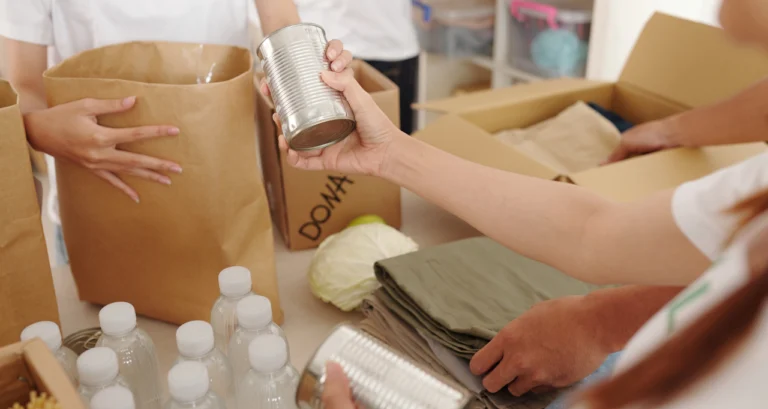SNAP Benefits 2025: Updated Rates, Eligibility & Payment Dates
The Supplemental Nutrition Assistance Program (SNAP) is a vital federal aid designed to support low-income families in the U.S. by providing access to essential food items. With the rising cost of living and inflation, adjustments to the program are crucial to ensuring that families can continue to afford nutritious meals. As we look towards 2025, there are some key updates to SNAP benefits, which are set to change based on economic conditions.
When Will the 2025 SNAP Benefit Changes Take Effect?
The official adjustments to SNAP benefits will begin on October 1, 2025. These changes are driven by the annual Cost-of-Living Adjustment (COLA) and aim to reflect the current economic environment, including inflation trends.
Why Are SNAP Benefits Being Adjusted in 2025?
SNAP benefits are adjusted every year to reflect inflation and changes in the cost of living. The Consumer Price Index for Urban Wage Earners and Clerical Workers (CPI-W) is the primary measure used to calculate the adjustments. This index monitors the price changes for essential goods and services, ensuring that the benefits keep pace with rising food costs. For 2025, an increase of 2.5% to 3% in SNAP benefits is anticipated, helping over 40 million Americans meet their nutritional needs.
What Will the New Maximum Allotments Be in 2025?
For a family of four living in the 48 contiguous states and the District of Columbia, the maximum SNAP allotment will rise to $975. In areas where the cost of living is higher, such as Alaska, the allotment can be as high as $1,953 for the same family size.
Here’s a breakdown of the maximum allotments for a family of four:
- Alaska: $1,258 to $1,953 (depending on the region)
- Guam: $1,437
- Hawaii: $1,723
- U.S. Virgin Islands: $1,254
What Changes Will Be Made to SNAP Deductions?
In addition to the maximum allotment increases, other aspects of SNAP eligibility and deductions will also be adjusted for 2025. Here are some of the key changes:
- Shelter Cap Value: For the 48 states and D.C., the shelter cap will increase to $712. In higher-cost areas such as Alaska, the cap will rise even more.
- Homeless Shelter Deduction: This will increase to $190.30 across all eligible regions.
- Standard Deduction: For households of one to three people in the 48 states and D.C., the standard deduction will increase to $204 a month.
These adjustments are designed to ensure that families facing high shelter costs can still receive adequate food assistance through the program.
How Will SNAP Asset Limits Change in 2025?
Another important update to SNAP for 2025 is the change in asset limits, which determines a household’s eligibility for the program. For most households, the asset limit will increase to $3,000. For households where at least one member is 60 or older or disabled, the asset limit will increase to $4,500.
SNAP Eligibility and Restrictions
Despite these increases, there are still specific eligibility requirements and restrictions that govern how SNAP benefits can be used. SNAP funds can only be used to purchase food items like fruits, vegetables, meats, dairy, and grains. They cannot be used for:
- Non-food items (e.g., toiletries, household supplies)
- Hot prepared foods (e.g., ready-made meals at grocery stores)
What Is the Expected Impact of SNAP Increases in 2025?
The 2025 SNAP adjustments are expected to provide much-needed relief to millions of households facing food insecurity due to rising inflation. Even a modest increase of 2.5% to 3% can help families afford more nutritious meals, which is critical for maintaining health and well-being.
For example, a household that received $10,000 in SNAP benefits in 2024 could see an increase to between $10,250 and $10,300 in 2025. While this might not seem like a significant jump, it can make a notable difference for families on tight budgets, especially as food prices continue to rise.
Key SNAP Payment Dates for October 2025
SNAP payments are distributed based on state and regional schedules. Below is a list of the expected payment dates for various states in October 2025:
| State/Region | Payment Dates |
|---|---|
| Alabama | October 4 to 23 |
| Arizona | October 1 to 13 |
| Arkansas | October 4 to 13 |
| California | October 1 to 10 |
| Colorado | October 1 to 10 |
| Florida | October 1 to 28 |
| New York | October 1 to 9 |
| Texas | October 1 to 28 |
| Pennsylvania | First 10 business days |
Conclusion
The upcoming changes to SNAP benefits in 2025 reflect the government’s commitment to adjusting aid programs in line with the rising cost of living. By increasing the maximum allotments and revising eligibility standards, SNAP continues to offer vital support to millions of Americans. If you are a SNAP recipient or considering applying for assistance, staying informed about these changes will help you navigate the evolving landscape of food assistance programs.
FAQs
What is the projected SNAP benefits increase for 2025?
SNAP benefits are expected to increase by about 2.5% to 3% to keep pace with inflation.
Who will benefit from the SNAP increase in Texas?
The SNAP increase in Texas will benefit over 40 million low-income individuals and families, including seniors and those in need of food assistance.
When will the SNAP increase take effect in 2025?
The increase will take effect starting from October 1, 2025, at the beginning of the new fiscal year.
Can I use SNAP benefits to buy any type of food?
SNAP benefits cover most grocery items, including fresh produce, meats, and dairy products. However, they cannot be used for non-food items or hot prepared meals.
How will the 2025 COLA adjustments affect households?
The 2025 COLA adjustments will provide critical relief for households facing rising food prices, helping to reduce the financial strain on low-income families. While the increase may seem modest, it can significantly impact families’ ability to maintain nutritious diets.




